Interference and rockets. Electronic warfare aircraft Shenyang J-16D (China)
In the interests of the People’s Liberation Army of China, a number of specialized aviation technicians, including electronic warfare aircraft. In recent years, several such samples have become known. One of the newest is the Shenyang J-16D aircraft, made on the basis of a 4th generation serial fighter.
From fighter to electronic warfare
As the basis for the promising EW aircraft, the serial fighter J-16 manufactured by Shenyang Aircraft Corporation was used. This aircraft is officially called the development option of the Chinese J-11BS, which compares favorably with a number of characteristics. According to various data and estimates, the creation of the J-16 could not do without Russian experience - the Su-30MKK aircraft was one of the sources of solutions and components.
The first flight of the experimental J-16 in the initial configuration took place in mid-2012. Already in 2013, Shenyang Corporation launched mass production, and in the spring of next year, the PLA Air Force received the first regiment set of aircraft. To date, at least 130-140 J-16 aircraft have been built.
According to the well-known data, in the basic version, the J-16 two-seat multi-role fighter has special equipment that allows it to counter the enemy’s electronic weapons. However, it was considered insufficient to solve some of the tasks, as a result of which the project of a specialized electronic warfare aircraft was launched.
Special sample
A new modification of the fighter received the index J-16D. The first flight of such an aircraft took place on December 18, 2015. Soon, some data about the project were published, as well as a number of photos of the experimental aircraft. Despite the limited amount of available materials, it is possible to evaluate some features of the Chinese project and present its approximate prospects.
In its design, the J-16D is as similar as possible to a base aircraft, but it has some noticeable differences. Changed the shape of the nose cone; it has become shorter and has a different surface curvature. Behind the fairing, in front of the lantern, there is no optoelectronic station characteristic of all aircraft of the Su-27 family. The built-in gun disappeared from the influx of the wing.
At the wingtips there were large containers of equipment that could be unambiguously identified as EW systems. Also, before painting, the plane clearly shows individual sections of the skin, under which antenna devices or other equipment characteristic of electronic warfare aircraft can be hidden.
Later, new photos of the J-16D aircraft appeared in the public domain. They show that special equipment is mounted not only on the wingtips. If necessary, the aircraft can carry a hanging container with equipment under the fuselage or under the wing.
It is known that the J-16 fighter received a new Chinese-made radar equipped with an active phased antenna array. Probably, its specialized version retains such equipment, however, the use of a new fairing may indicate the processing of the radar complex.
The wingtips, most likely, are part of the standard equipment of the aircraft. They contain electronic intelligence to detect radiation from other electronic systems and jamming stations. In foreign publications, J-16D containers are often compared with AN / ALQ-218 products used on American aircraft.
Established EW aircraft can be supplemented by hanging containers of a similar purpose. Due to this, the J-16D can simultaneously carry and use different tools that work in different ranges and optimized for different tasks.
It is obvious that the restructuring and addition of the avionics complex to solve special problems affected the equipment of the cabin. The workplace of the pilot-operator should now provide control and management of electronic warfare equipment. Also, the operator must work with the radar and, possibly, with weapons.
Electronics Fighter
EW Shenyang J-16D aircraft is built on the basis of the existing model, which indicates its flight performance. J-16 is a multi-role fighter with a maximum speed of M = 2,4 and a combat radius of 1500 km. It is unlikely that a specialized J-16D in its flight data is significantly different from the base fighter.
Thanks to the existing radar, the new EW aircraft, like the original J-16, is able to monitor the air and ground conditions - however, the data collected is used differently. Using other products from the avionics, the aircraft should identify sources of radiation in the form of enemy electronic systems and “jam” them with interference. Unfortunately, the exact characteristics of the airborne and overhead systems of electronic warfare remain unknown.
In the foreign press, it has been suggested that some of the shock capabilities remain. So, even with the installation of several hanging EW containers, the J-16D aircraft retains free suspension components and a certain load capacity. This can be used to carry and use different types of anti-radar missiles.
The PLA Air Force and Navy are armed with several anti-radar aircraft missiles, both of their own design and of copies of Soviet / Russian products. Such missiles are designed to destroy air, ground and surface targets. All like that weapon can be used by modern fighters, including J-16. Whether the EW J-16D aircraft can carry such weapons is not known. However, according to various estimates, the presence of such capabilities would seriously increase the potential of this machine.
Uncertain Future
The Shenyang J-16 multirole fighter has already gone into production and is being operated by the PLA Air Force. The current status of its specialized modification equipped with electronic warfare equipment is unclear. New messages about the J-16D project did not appear long ago, but at the time of the last News the aircraft was in the testing phase.
A lot of time has passed since the first flight, and this suggests that the project is approaching the stage of launching the series and adopting it. In addition, it cannot be ruled out that the J-16D had already begun service, but this was not reported due to the characteristic Chinese approach to secrecy.
In service, the new J-16D will serve at ground airfields and provide the combat work of other aircraft, including J-16 of the original modification. EW aircraft will be able to accompany fighter-bombers, identify threats and fight them with the help of interference or anti-radar interference. In view of the special role, such a technique will not be numerous. The total release will not exceed several dozen units.
For the Air Force, but not for the Navy
It is unlikely that the J-16D will go into service with the Navy. In the interests of naval aviation, a specialized aircraft based on the J-15 carrier-based fighter is currently being developed. The J-15D took off for the first time in 2016 and is still being tested. When these aircraft will be able to replenish the deck aircraft of the PLA Navy - is unknown.
Available photographs show that the J-15D differs from the original J-15 in much the same way as the J-16D from the base sample. A different radar radome was used, there was no gun and OLS, and new containers appeared on the wing. Perhaps two EW aircraft are unified according to the main systems.
In the relevant foreign media there is a version about the possible development of a deck modification of the "land" fighter J-16. In this regard, an assumption is made about the possible transfer of developments on avionics in the field of carrier-based aviation. However, such ideas do not look necessary and promising. A J-15 fighter with all the necessary features has already been created for the Navy, and an electronic warfare aircraft is being developed on its basis.
Thus, the approximate prospects of the J-16D project are already clear. In the near future, a specialized electronic warfare aircraft will have to go into service with the PLA air force and provide increased tactical combat effectiveness. We should also expect the early appearance of EW carrier-based carrier-based aircraft based on the J-15 fighter. This means that the PLA command is well aware of the importance of electronic systems and means of dealing with them. Accordingly, measures are being taken to develop both of these areas, and the J-16D is one of the most important developments in this context.
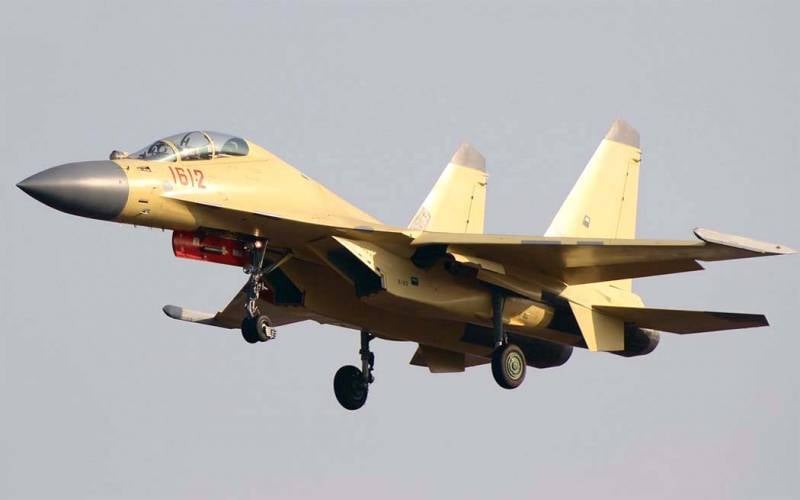
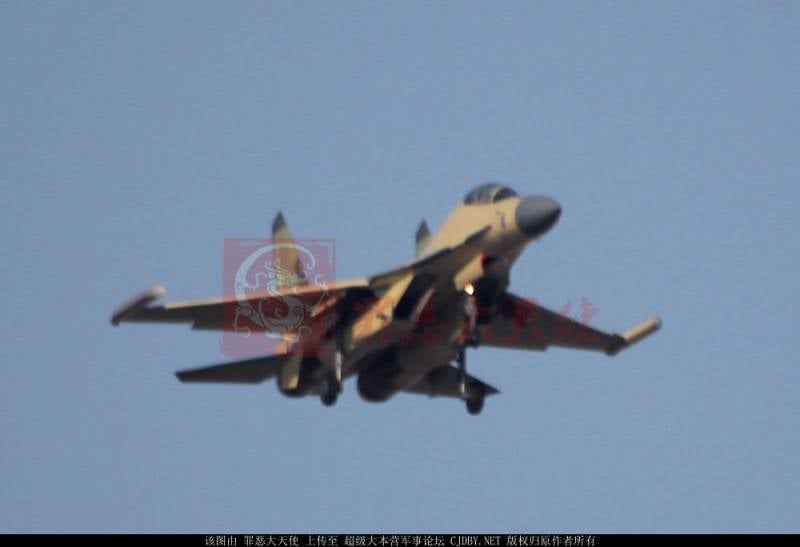
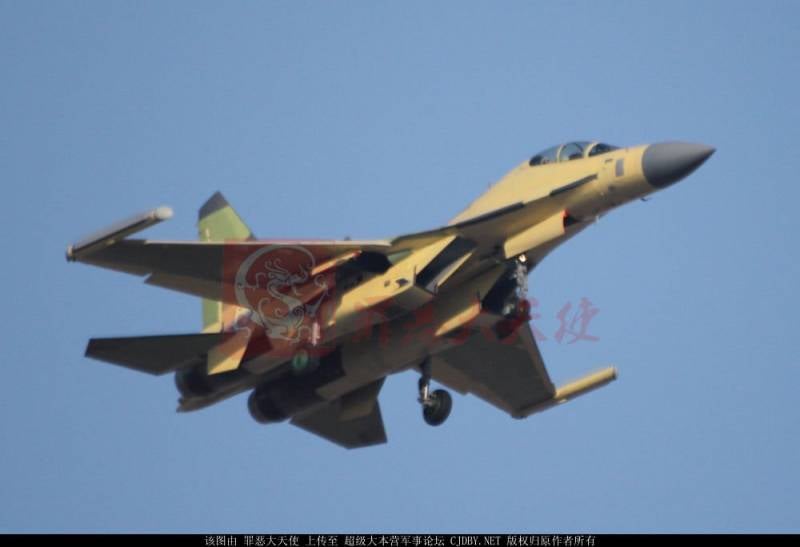
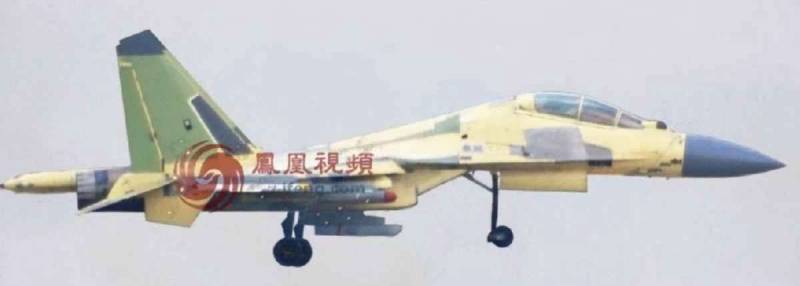
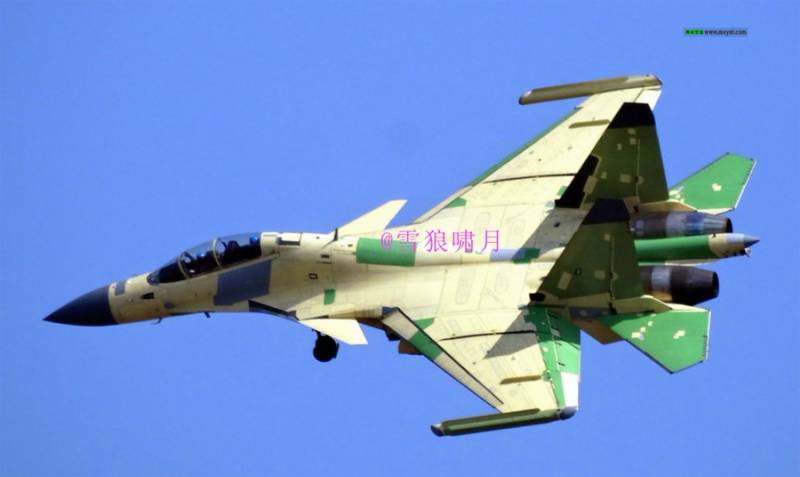
Information